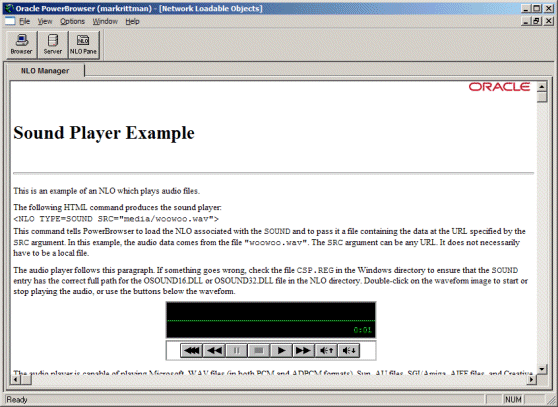A Blast From The Past : "Oracle PowerBrowser"
Did you know that Oracle were once in the browser business, with a product that potentially rivalled Netscape Navigator and Internet Explorer? Strange as it may seem, Oracle once had their own browser, known as Oracle Powerbrowser.

Launched back in 1996, Oracle Powerbrowser was Oracle's own web browser that was Netscape 1.1 compatible, came with it's own build-in personal web server, and introduced a number of unique features that tied up with Oracle's then-current craze around all things internet. Nowadays, hardly anyone remembers it, but you can still find copies of it around the internet and it's interesting to look back at what it was all about.
The basic Powerbrowser interface resembled the 1.0 release of Netscape Navigator, had basic support for tables and images, and came with side panels that listed the user's bookmarks and history of pages viewed.
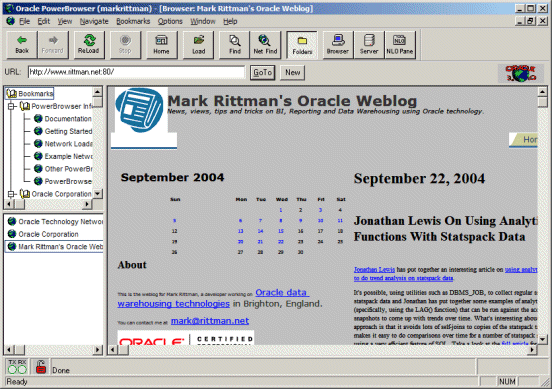
Each set of three panes was a separate window in an MDI application, and you could open multiple windows to view multiple sites.
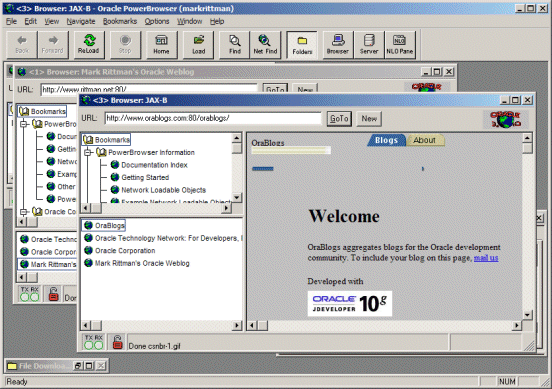
The preferences page let you enter proxy details, set up your homepage, change timeouts and maintain other settings.
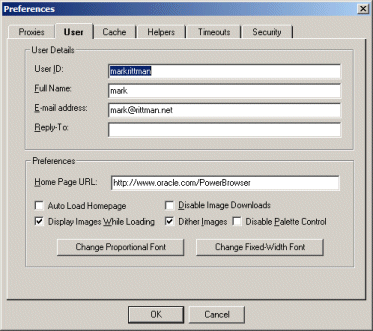
And there was even a built-in internet search feature, a kind of 'google bar forerunner'.
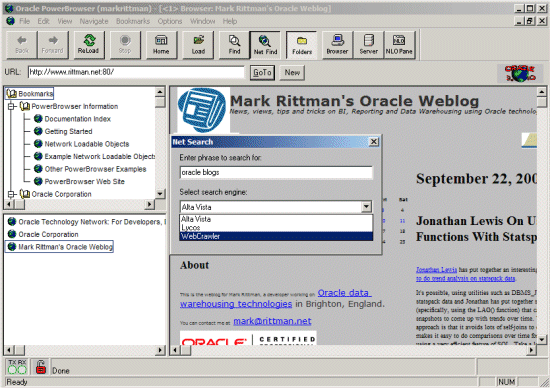
Oracle Powerbrowser also came with a personal web server, accessed by pressing the 'Server' button on the toolbar. The application let you set up a personal home page, and also came with a wizard for creating database queries against ODBC datasources.
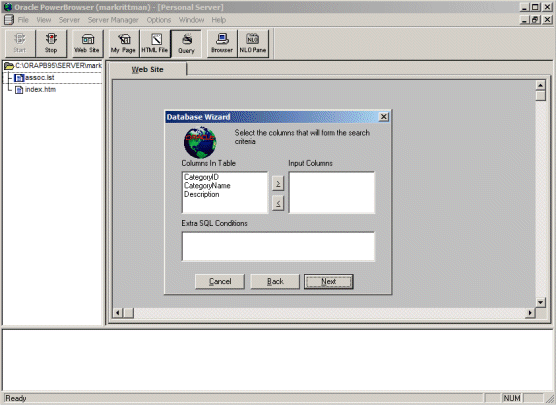
These queries were then run using Oracle Basic (as used by another old Oracle tool, Oracle Power Objects) and described using 'Database Markup Language'. According to this guide to Powerbrowser [http://docs.rinet.ru/Krikun/oun54fi.htm#I41 - no longer available],
"DBML Extension Overview
There are some rather large Web sites on the Internet. There are some even larger ones, however, that are not accessible by the public Internet community because they reside within corporate networks. One such site that I have worked with currently has over 300 HTML pages. Making sure that those pages contain current information by editing the HTML is a nightmare. A better way to administrate is to pull information out the database and dynamically create HTML pages from that.
Using a database with HTML requires that some extensions be added. Oracle's extensions are known as the Database Markup Language (DBML). These extensions allow for Oracle Basic (the same Basic engine supplied with Oracle Power Objects) to be embedded into HTML documents. New methods specific to PowerBrowser have been added, and the ones specific to Power Objects have been removed.
In addition to the ability to access databases and embed BASIC within HTML documents, DBML also allows for tighter integration with the desktop using Microsoft's object linking and embedding (OLE).
Going over the DBML extensions in detail is beyond the scope of this chapter. As PowerBrowser is released, the best place to go for the DBML specification will be http://www.oracle.com."
An early forerunner to ASP, PHP and JSPs. Another interesting Powerbrowser feature was Network Loadable Objects, something that looks very much like a forerunner to ActiveX. According to this press release:
"Designed from the ground up to meet the demands of corporate users and developers, Oracle PowerBrowser 1.5 is a full-function intranet client that incorporates state-of-the-art Web navigation, a drag-and-drop Personal Server, built-in Java and Basic scripting capabilities, and support for third-party applications called Network Loadable Objects (NLOs) ...
... Network Loadable Objects (NLOs): Oracle PowerBrowser allows users to extend the browser's capabilities by downloading and executing third-party applications called NLOs. For example, PowerBrowser can execute video conferencing or existing client/server applications from within any Web page automatically. NLOs are installed transparently from secure servers and are also compatible with Netscape 2.0 Plug-ins. "
Whilst this readme file from an early beta [http://fresh.t-systems-sfr.com/pc/src/www/orapb95.txt - no longer available] describes NLOs and another feature called 'client-side processing'
"With PowerBrowser, Oracle is introducing two new technologies which enable more sophisticated methods of exploring the Web. Using Network Loadable ObjectsTM (NLO) and Client-Side Processing (CSP), developers can now exploit the true potential of Web computing.
Network Loadable Objects provides a framework for running third- party network-resident applications within PowerBrowser. NLOs allow new
applications like Adobe PDF viewers, Java applets and VRML scripts to run natively in PowerBrowser.
Client-Side Processing gives developers a way to create and execute OS-specific program modules on the Web client. With CSP, developers can
write code which fully integrates the features of the client operating environment with PowerBrowser.
To help Web developers get started, Oracle provides Software Development Kits (SDKs) for both of these architectures, complete with documentation and sample applications."
Lastly, a separate application called Powerbrowser Design Tool [http://docs.rinet.ru/Krikun/54oun19.gif - link no longer available] was provided along with Powerbrowser for authoring web pages.
In the end though, as we all know, Oracle eventually dropped Powerbrowser and, from looking at the 'severe limitations' page of this Powerbrowser review, the main reason was that it was r-e-a-l-l-y r-e-a-l-l-y s-l-o-w
"The single largest factor for this is an amazing lack of speed -- PowerBrowser is one of the slowest browsers on the market. Despite a solid selection of features, PowerBrowser still lacks many critical features found in other browsers, including tags like font size and super/subscript; FTP, news, and receive mail support; HTML 4.0 and Dynamic HTML support; pre-configured helper applications; and much more."
With the review concluding:
"If PowerBrowser had received a much needed speed infusion and beefed up its supply of features, it could have had a chance to become a serious competitor to the best browsers on the market; however, with the decision to discontinue development and support for the browser, it's hard to recommend PowerBrowser as a serious alternative for users of Netscape or Internet Explorer.
Pros: Client side processes, tables and frames support, other cool features
Cons: Extremely slow, lacks many critical features relative to other Web browsers"
Still, it was a decent attempt at a Netscape-compatible browser, and at that point it made sense to bring out a browser to complement the move towards Oracle 8i and tools such as Powerobjects. The scripting support is not a million miles away from what we've actually got now, and the Network Loadable Objects are directly related to Java applets and ActiveX objects. All very interesting - does anyone from Oracle remember using it? Any interesting stories?
Posted by mark at September 23, 2004 09:01 PM